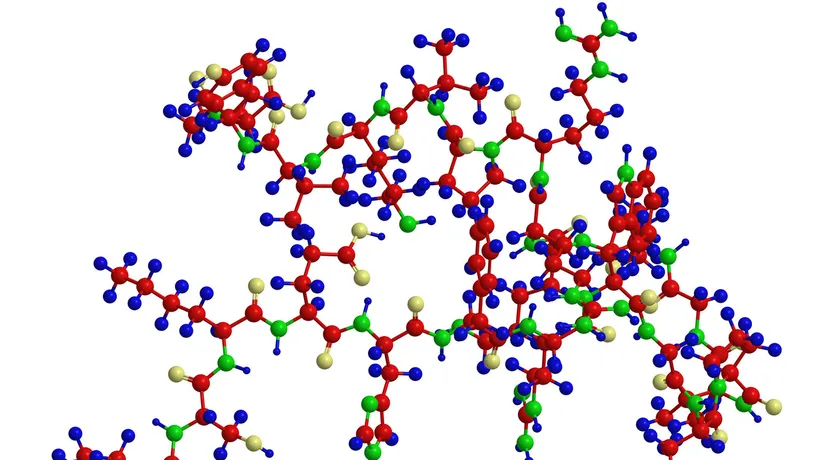Studies suggest peptides are amino acid chains with potentially potent biological effects, such as anti-aging properties, skin health enhancement, immune system strengthening, and weight reduction. This post will discuss the theoretical properties of peptides and the top peptide applications in research.
Ipamorelin Peptide and Fat
Studies in animal models suggest Ipamorelin may increase fat metabolism and breakdown by stimulating the anterior pituitary gland’s natural growth hormone production. Ipamorelin has also been suggested to enhance energy metabolism and insulin resistance, improving glycemic control [1]. Scientists speculate it may also reduce lipogenesis (creating new fat cells).
PT-141 Peptide and Sexual Vitality
Scientists hypothesize that by activating melanocortin receptors in the brain, the peptide PT-141 may increase sexual desire and arousal in female test subjects for longer periods, which is good for their health in general [2]. The potential effectiveness of PT-141 in mitigating erectile dysfunction in male subjects has also been suggested in clinical trials, though further investigative research is necessary, particularly in clinical environments. Researchers speculate this peptide may improve sexual performance by increasing genital energy levels and blood flow, as determined in animal test models.
CJC-1295 Peptide and Sleep
Researchers suggest one of the strongest growth hormone secretagogues (GHS) is CJC 1295.
The original purpose of the peptide was to potentially increase the anterior pituitary gland’s synthesis of growth hormone and insulin-like growth factor-1. Somatostatin is an inhibitor of growth hormone, and researchers have suggested CJC-1295 to have an inhibitory impact on its secretion.
Studies suggest these hormones may promote strength, stamina, and lean mass gains. Research suggests CJC-1295 may have the potential to regulate sleep patterns. CJC-1295 is only one example of a growth hormone secretagogue that has been suggested to have a wide range of properties, including improved cardiovascular health, faster wound recovery, and higher protein synthesis rates.
IGF-1 Peptide and Muscle
Somatomedin C, or insulin-like growth factor 1, comprises 70 amino acids. The polypeptide hormone IGF-2 has structural similarities with proinsulin. IGF-1 has disulfide links connecting its polypeptide chains.
Studies suggest the synthesis of this protein, which is largely made in the liver, is stimulated by GH.
Research suggests Insulin growth factor binding protein (IGF-BP) may be the primary receptor for IGF-1. Researchers speculate the subsequent binding may dramatically lengthen the time IGF-1 is active in the bloodstream.
Matrixyl Peptide and Skin
Matrixyl, or Palmitoyl Pentapeptide-4, is a known peptide for its potential anti-aging properties.
Studies suggest the potential wrinkle-reducing properties may come from the product’s ability to stimulate collagen formation in the skin. Researchers speculate Matrixyl is a receptor agonist [3] which may bind to certain skin receptors and causes a reaction.
Peptides and Skin-Tightening
Studies suggest that in addition to its potential tightening and firming properties, Argireline has been suggested to provide various productive outcomes for the skin.
Researchers speculate wrinkles and fine lines may be smoothed out since they may act by relaxing muscles. Collagen and elastin are two proteins crucial to skin suppleness and firmness, and Argireline has been suggested in research studies to boost their synthesis [4].
Scientists hypothesize that consistent usage of Argireline has been suggested to help tighten and tone skin.
Research suggests this particular peptide, called Acetyl Hexapeptide 3, has been suggested in investigations to minimize the visibility of fine lines and wrinkles by blocking the function of muscles. Scientists speculate Argireline may help to relax expressive muscles, which might lead to mitigation of dynamic wrinkles over time.
Studies suggest the potential antioxidant properties of Argireline may complement its anti-aging actions, shielding skin from free radical damage.
Argireline Peptide Properties
- Studies suggest wrinkles and fine lines may be less noticeable following influence of Argireline.
- Scientists hypothesize that protecting the skin from free radical damage, contributing to premature aging may be one of Argireline’s antioxidant characteristics.
- Research suggests collagen, a protein considered crucial for skin development and firmness, may be produced in response to Argireline’s stimulation of its synthesis.
- Researchers speculate that consistent usage of Argireline has been suggested to enhance the overall longevity and health of skin.
Research compounds like those mentioned above should only be employed in research spaces like laboratories. Human consumption of any type is prohibited. Click here for more useful information about peptides.
References
[1] Gao Y, Yuan X, Zhu Z, Wang D, Liu Q, Gu W. Research and prospect of peptides for use in obesity treatment (Review). Exp Ther Med. 2020 Dec;20(6):234. doi: 10.3892/etm.2020.9364. Epub 2020 Oct 16. PMID: 33149788; PMCID: PMC7604735. https://www.ncbi.nlm.nih.gov/pmc/articles/PMC7604735/
[2] Molinoff PB, Shadiack AM, Earle D, Diamond LE, Quon CY. PT-141: a melanocortin agonist for the treatment of sexual dysfunction. Ann N Y Acad Sci. 2003 Jun;994:96-102. doi: 10.1111/j.1749-6632.2003.tb03167.x. PMID: 12851303. https://pubmed.ncbi.nlm.nih.gov/12851303/
[3] Aldag C, Nogueira Teixeira D, Leventhal PS. Skin rejuvenation using cosmetic products containing growth factors, cytokines, and matrikines: a review of the literature. Clin Cosmet Investig Dermatol. 2016 Nov 9;9:411-419. doi: 10.2147/CCID.S116158. PMID: 27877059; PMCID: PMC5108505. https://www.ncbi.nlm.nih.gov/pmc/articles/PMC5108505/
[4] Lim SH, Sun Y, Thiruvallur Madanagopal T, Rosa V, Kang L. Enhanced Skin Permeation of Anti-wrinkle Peptides via Molecular Modification. Sci Rep. 2018 Jan 25;8(1):1596. doi: 10.1038/s41598-017-18454-z. Erratum in: Sci Rep. 2018 Apr 20;8(1):6500. PMID: 29371611; PMCID: PMC5785486. https://www.ncbi.nlm.nih.gov/pmc/articles/PMC5785486/
This article is from one our partners and the editorial team at Spiel Times hasn’t edited it.
